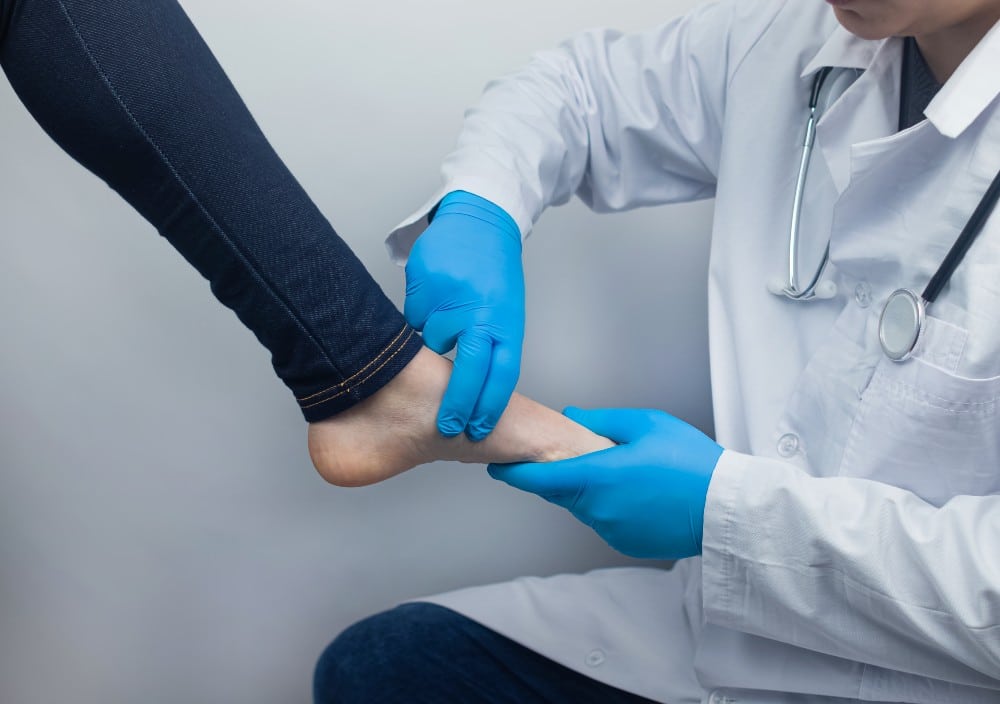Heel Spurs
Do you experience heel pain when you walk? Are you concerned that it may be more than just a temporary fleeting heel pain? The first thing you need to know is that you don’t need to worry. It’s more common than you might think.
Many people don’t even know they have heel spurs, a condition that occurs in approximately 38 percent of the population. Heel spurs are often misunderstood. Several studies have found that people who have heel spurs don’t even experience pain from them.
In the foot world, they are like invisible swords, often causing no harm. Think of them as sharp knives capable of doing great damage and causing a great deal of discomfort if not treated properly. Below, we will highlight the causes, symptoms, and treatment options for heel spurs. It’s time to take a deeper look at the potentially uncomfortable condition that lurks beneath your feet.
Heel Spurs: What Are They?
A heel spur is a protrusion of a bone that juts out from the bottom of your heel. It is also referred to as a bone spur that typically occurs at the junction of the heel and the ball of the foot.
It is a foot condition caused by a calcium deposit between the heel and arch. The condition usually worsens with age and can get worse if you don’t receive proper treatment.
There are various kinds of heel spurs, such as pointy ones, hooked ones, and shelf-like ones. In heel spurs, outgrowths protrude toward the arch (middle of the foot) from the underside of the heel. Known as the plantar fascia, this area of the foot is located right under your heel. Heel spurs are also referred to as osteophytes or calcaneal spurs.
What Causes Heel Spurs?
You can develop heel spurs when there is prolonged pressure or strain on the muscles and ligaments of the heel. In addition, it can also result from ruptured membranes that cover and protect your heel bone.
The foot muscles and ligaments are strained if the membrane is repeatedly torn. It is a very common condition in sportspeople who engage in strenuous running and jumping routines.
Sometimes, heel spurs become more prevalent as you age. Under the heel, calcium deposits can accumulate over time. These deposits form heel spurs, which are bony protrusions.
There is a 70% chance that people with plantar fasciitis also develop painful heel spurs.
Heel Spurs Treatment Options
A heel spur is just one of the long-term consequences of chronic plantar fasciitis. The pain you feel in your heel usually is caused by your plantar fasciitis, not the heel spurs. So treating the underlying conditions first should find you relief from the heel pain. If the pain pursuits after, then the heel spurs should be removed.
Some treatment options for helping with heel pain and plantar fasciitis include:
- Cold therapy – An effective method for reducing swelling and pain.
- Take it easy – Resting and removing pressure from the feet will reduce swelling and pain.
- Sports shoes with cushioning – A good investment if you’re active. They help to ease pain and relieve pressure.
- Using custom orthotics – The cushioned orthotics sit inside your shoes and relieve pressure on the heels.
- Medication that reduces inflammation – This aids in reducing swelling and redness around the area.
- Pain-relieving cortisone injections – In the affected area, these reduce swelling and pain. When over-the-counter anti-inflammatory medications fail to relieve pain, this is a better choice.
- Massage gun therapy – massaging heels and arches helps relieve stress and pain and allows the feet to relax.
- MLS laser therapy – painless and non-invasive, this therapy seeks to boost your body’s immune system healing by improving blood flow and reducing inflammation.
Only in extreme and rare cases do the heel spurs need to be surgically removed. Again this is only after treatment of the underlying plantar fasciitis has failed to help provide pain relief. Surgical removal of heel spurs is the only way to get rid of them permanently.
Providing The Highest Level of Foot & Ankle Care
Our foot and ankle care specialists provide exceptional care to patients struggling with heel spurs. For more than 25 years, our resident podiatrist Dr. Leland Gilmore has provided exceptional podiatric care to the community of Northern Virginia and beyond. You can count on our team to relieve your pain and help you live a holistic life.
Get in touch with us today by using our online contact form or give us a call at (703) 560-3773.
